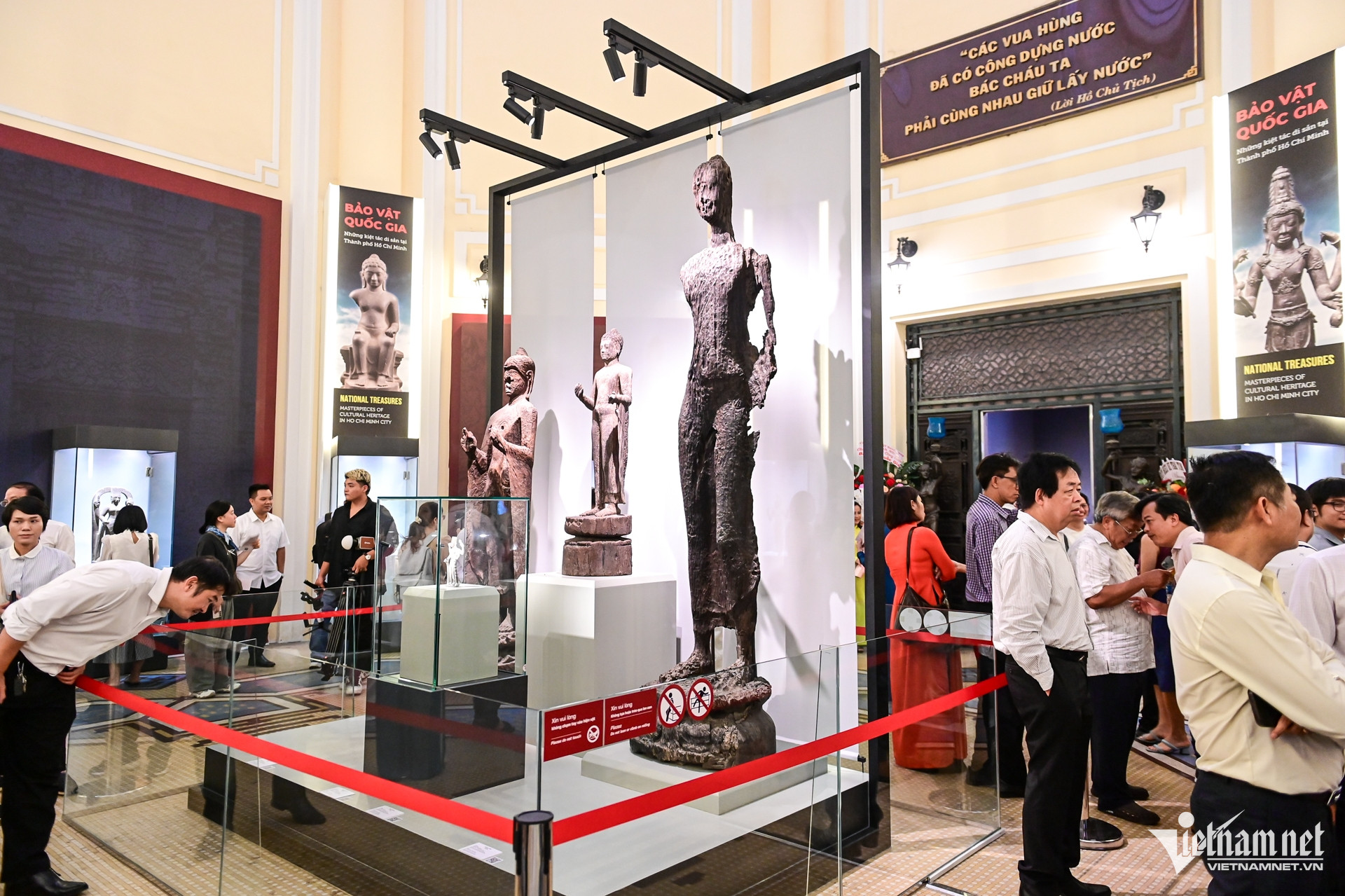
17 national treasures from public museums and private collections in Ho Chi Minh City are on display for the first time at the Ho Chi Minh City Museum of History, sketching a comprehensive picture of Vietnamese history and culture from prehistoric to modern times.
The event, which takes place from June 29 to August 10, not only has cultural significance but also contributes to connecting the past with the present and the future, helping the public better understand the value of national heritage.
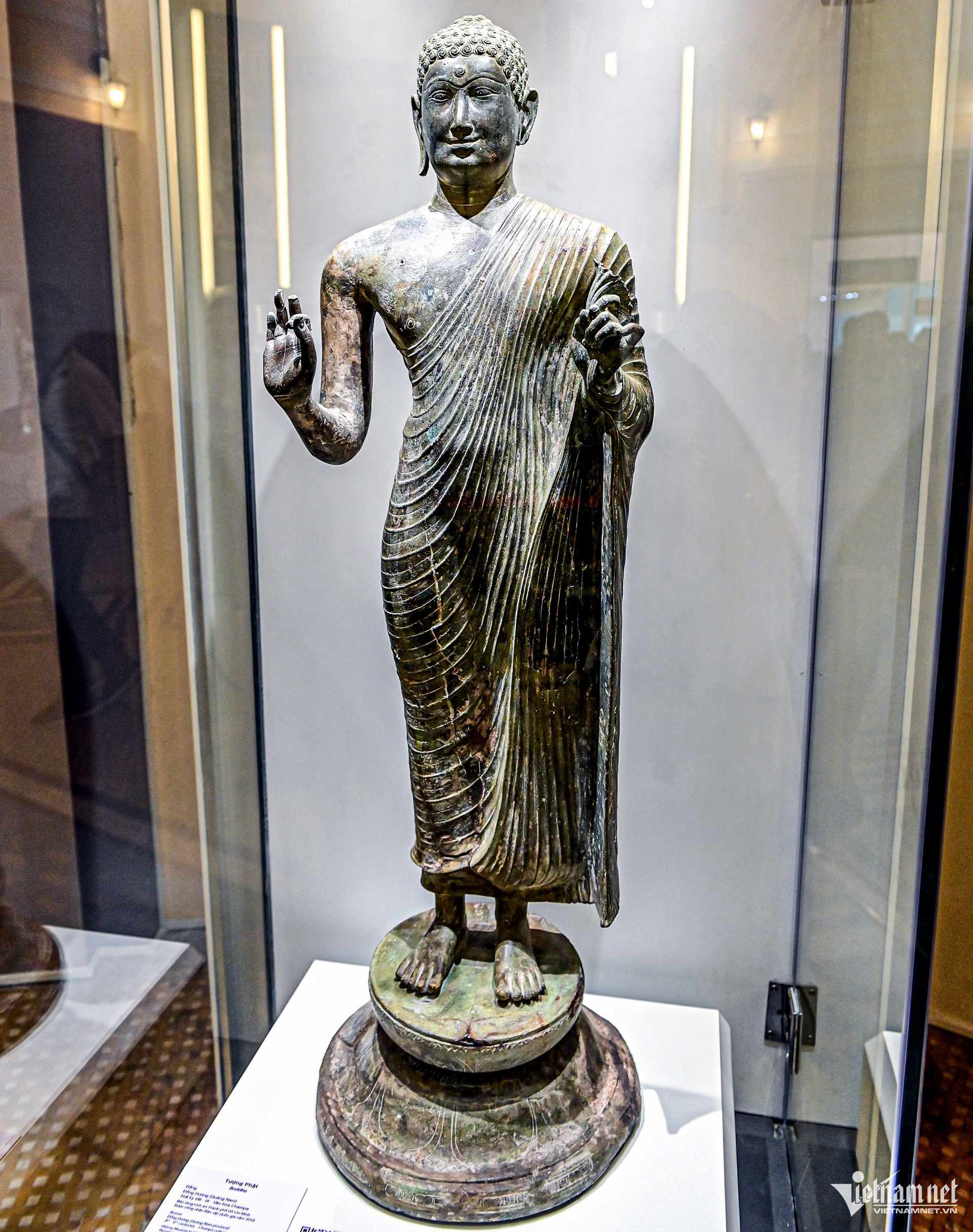
The highlight here is the Dong Duong Buddha statue - a national treasure discovered by French archaeologist Henri Parmentier in 1911 in Quang Nam . The work dates back to the 8th - 9th century and is considered one of the oldest and most beautiful Buddha statues in Southeast Asia, representing the sophisticated bronze casting technique and the unique plastic art of the Champa culture.
The statue has been displayed in many countries. At the Southeast Asian antiques exhibition in France, the artifact was insured for 5 million USD. This is the highest insurance coverage for a Vietnamese statue displayed abroad.


The statue is made of bronze, standing on a stylized lotus pedestal, showing the noble features of Buddhist iconography: on the top of the head is a high protruding meat protuberance representing transcendent wisdom, spiral hair, long earlobes, round, benevolent face; a circle is carved in the middle of the forehead, curved eyebrows, thin nose; high neck with three folds; the body is wearing a monk's robe, leaving the right shoulder exposed, both arms extended forward, the right hand in the Dharma-preaching mudra, the left hand holding the hem of the robe.
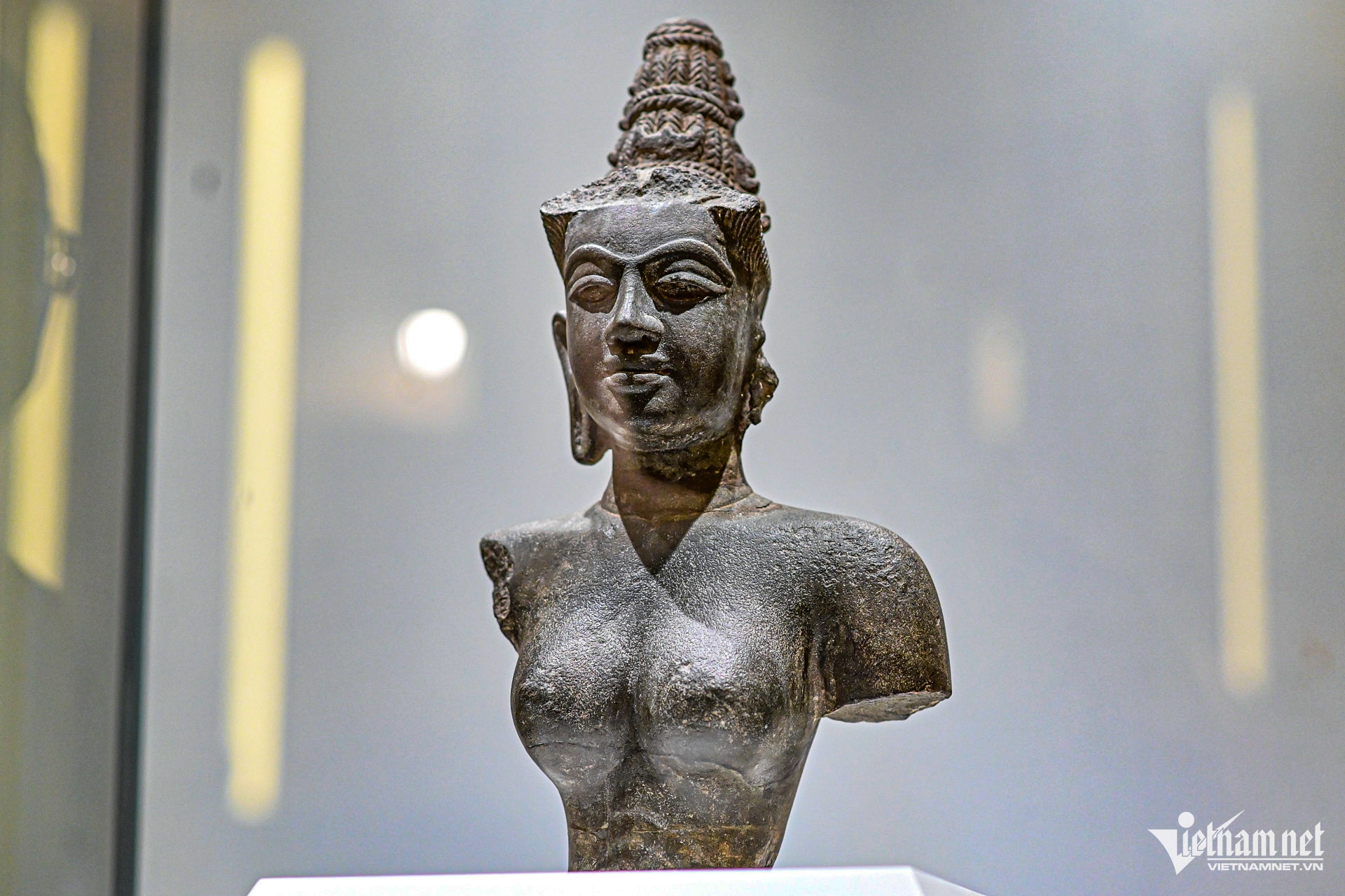
The 38.5cm tall, 20kg bust of Goddess Devi, dating back to the 10th century, was discovered in 1911 at a small temple in Quang Nam. The sandstone statue depicts a rare portrait of a “Champa-ized” Indian goddess.
The statue bears typical Cham sculpture features such as long, curved, and connected eyebrows, large eyes, a slightly smiling mouth, and a high, pyramid-shaped hair bun. The work was recognized as a national treasure in 2012.
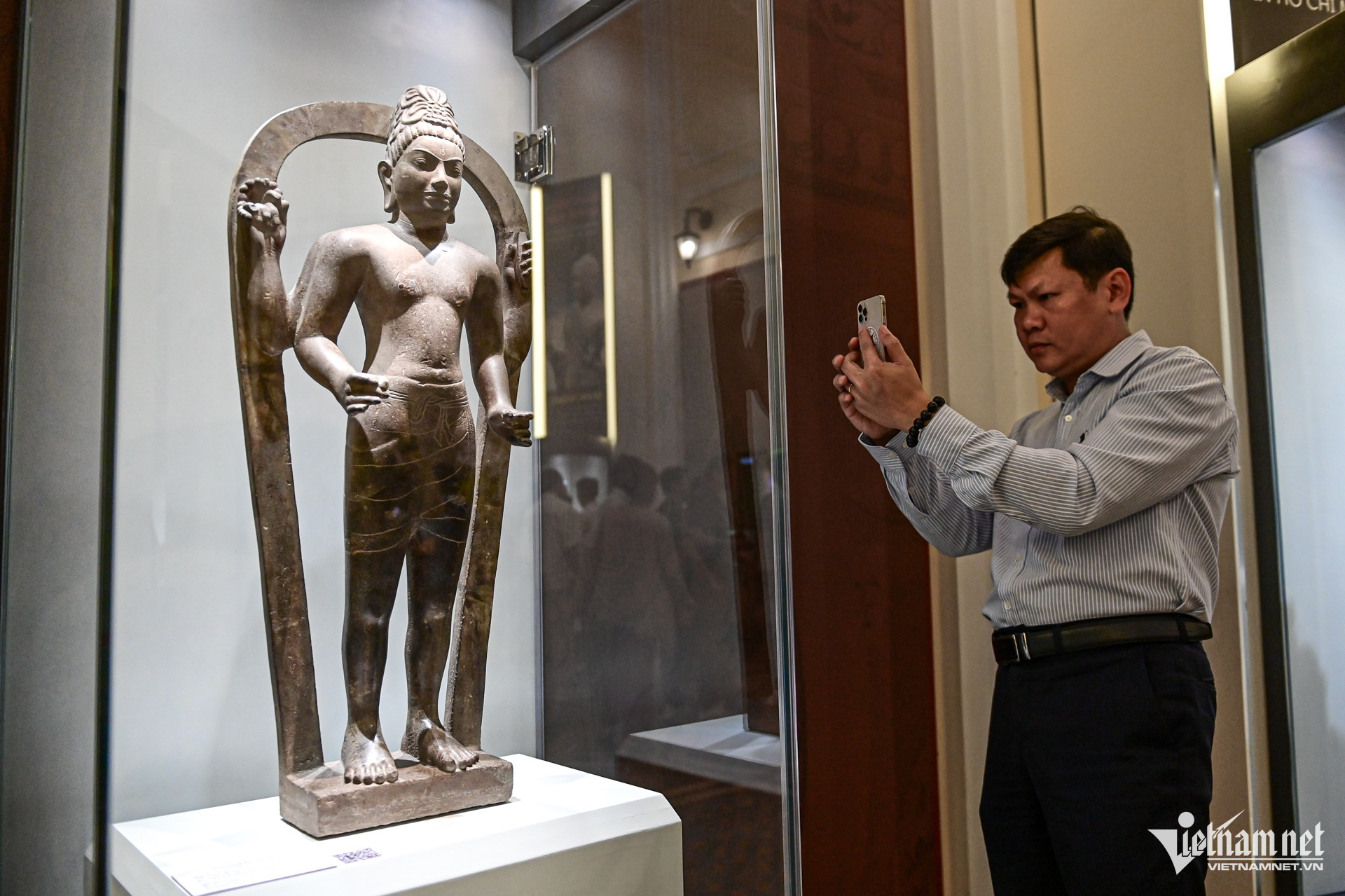
The statue of Bodhisattva Avalokitesvara dates back to the 7th century and was discovered in Tra Vinh in 1937. The statue is 90cm high, made of sandstone, has 4 arms and is an original, unique type - a typical representative of the Avalokitesvara sculpture of the Oc Eo culture.
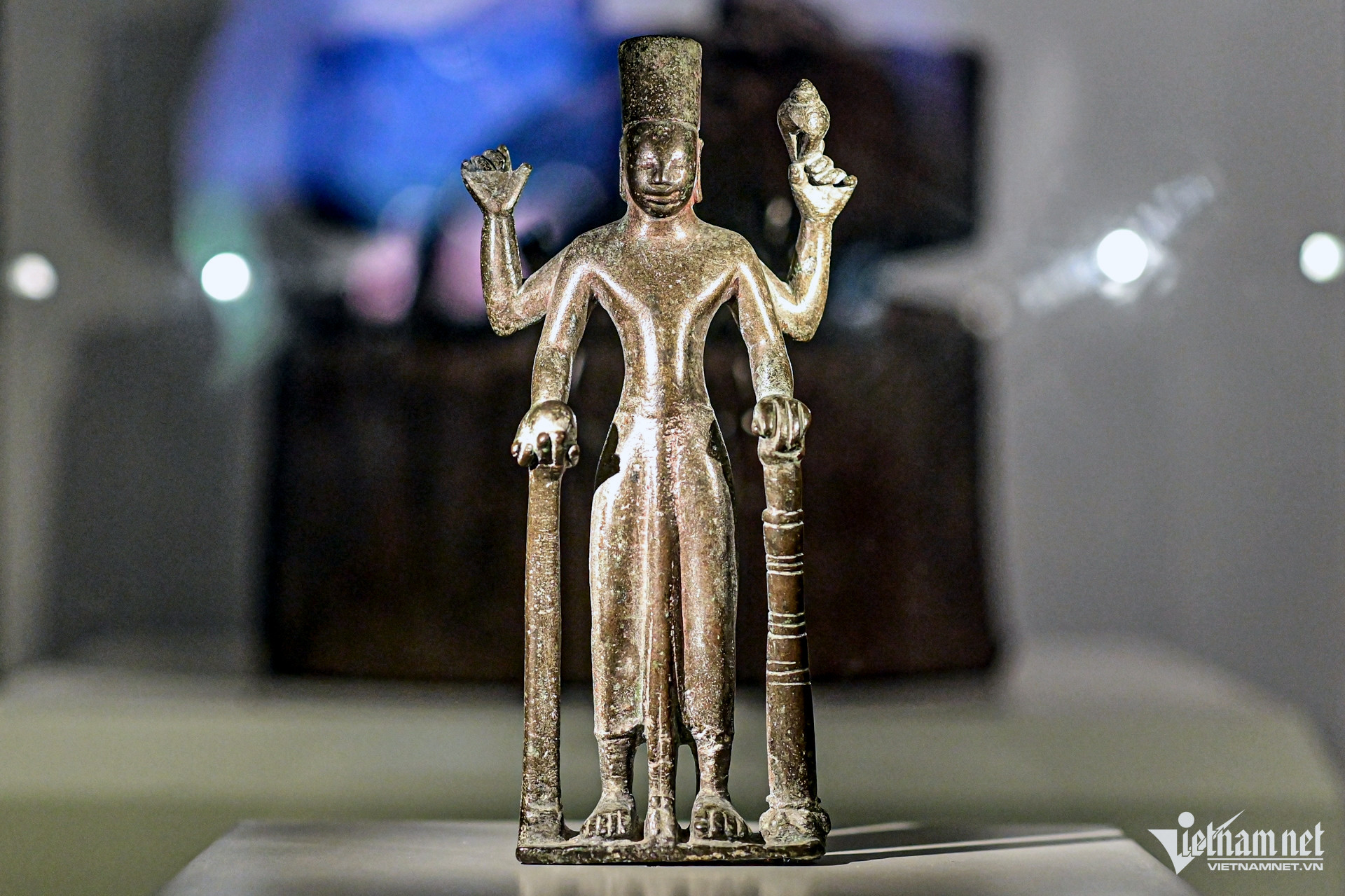
The 23cm high statue of Vishnu, discovered in 1936 in Kien Giang , dates back to the 3rd - 5th century. The work belongs to the Oc Eo culture, cast in bronze with a balanced, sophisticated shape, each hand holding a magic weapon. Vishnu is the god of conservation in Hinduism, often worshiped by the people of Phu Nam to pray for protection and the elimination of evil.

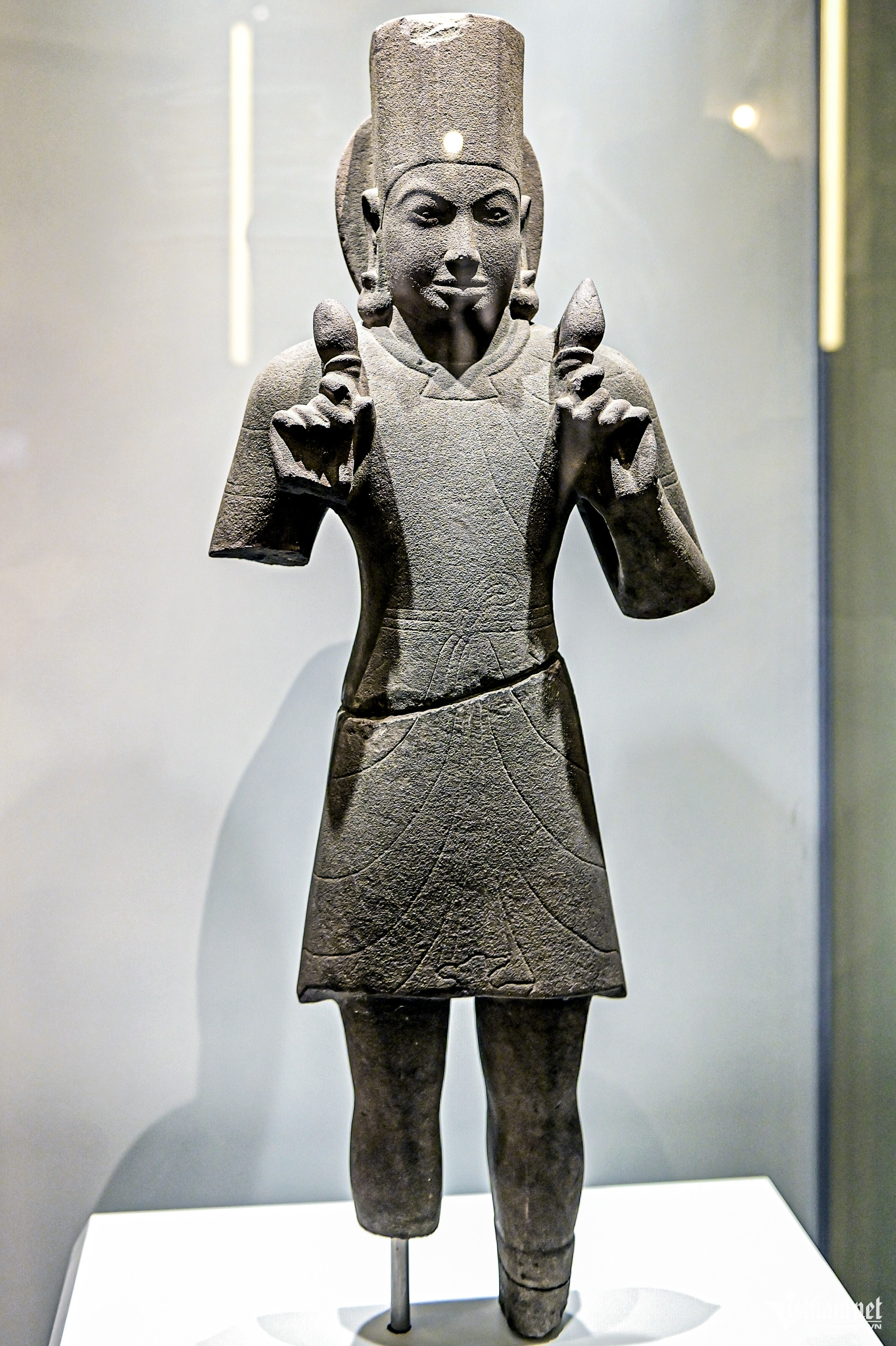
The statue of goddess Durga was carved in the 7th century and discovered in 1902 in Tra Vinh. The statue is 75cm high and weighs 75kg, made of sandstone, depicting the goddess standing on the head of a buffalo - a symbol of subduing the buffalo demon and freeing people from disaster.
On the right is a statue of the sun god Surya, about 1,500 years old, found in 1928 in An Giang. The statue weighs 80kg and depicts the god in a solemn standing position.
Both artifacts represent the sophisticated sculptural techniques of the Oc Eo culture.

The Son Tho Buddha statue was discovered at Son Tho Pagoda (Tra Vinh), made by Phu Nam people in the 6th - 7th century. The statue is 59cm high, weighs 80kg, and is made of sandstone, depicting the image of Buddha sitting on a throne with his legs hanging down - a typical posture in ancient Buddhist art. The work was recognized as a national treasure in 2018.


The Avalokitesvara Hoai Nhon statue belongs to the Champa culture, dated to the 8th - 9th century, made of bronze, weighing about 40kg. The statue depicts a Bodhisattva with 4 arms, standing gracefully, carrying a statue of Amitabha Buddha on his head.
The photo on the side is another bronze statue of Avalokitesvara, made around the 10th century, weighing 35kg, with hair tied up in a high bun, a crown carved with a seated Buddha and many jewels. The statue has 4 arms, of which the 2 front hands hold a lotus bud and a vase of nectar. The two statues reflect the sophisticated bronze casting skills, demonstrating the brilliant development of Buddhism under the Champa period.
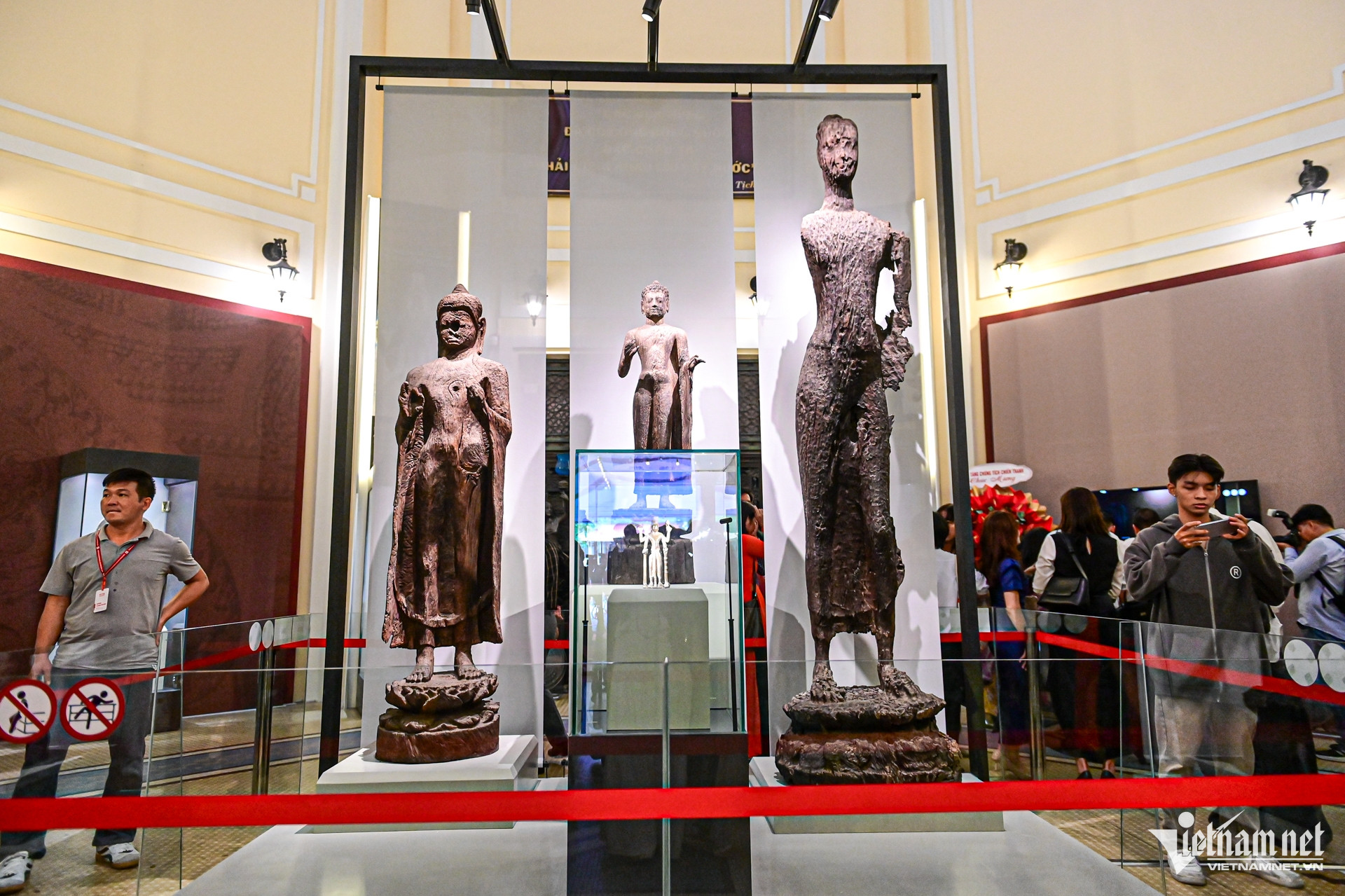
On the left corner is a statue of Buddha Shakyamuni, discovered in Dong Thap in 1937. The statue is 2m high, weighs 100kg, and is carved from a single piece of pearl wood, about 1,500 years old, reflecting the sculpture art of Oc Eo culture.
In the middle is a Buddha statue made of Lagerstroemia wood, discovered in Long An in 1947, dating from the 3rd - 4th century. The statue is 1.13m tall, weighs 73kg, has a slim figure, and wears an open-shoulder robe. On the right is a Buddha statue standing on a lotus throne, made of Sao wood, dating from the 4th century, found in Dong Thap in 1943, 2.68m tall, weighs 100kg.
These are the three oldest wooden Buddha statues in Southeast Asia, currently on display at the center of the exhibition area, owned by the Ho Chi Minh City Museum of History.
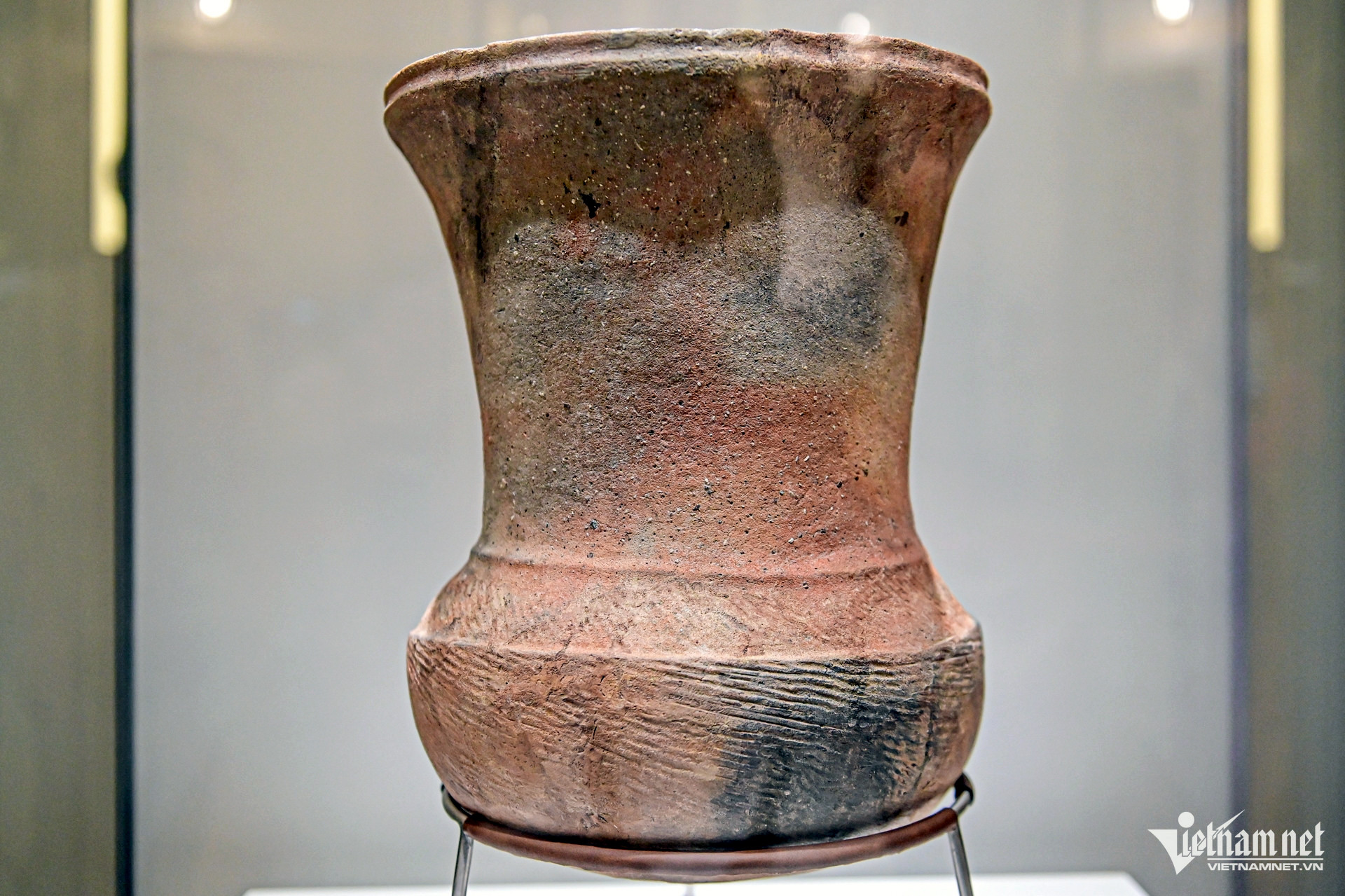
Dong Son culture ceramic pot, dating back about 2,000-2,500 years ago, is an artifact in the private collection of actor Chi Bao. This is an original, unique artifact, recognized as a national treasure in 2024. The ceramic pot has high practical value, reflecting the life of the Hung Kings when they founded the country.


The printing mold of the 5-dong bill, dated 1947, is an artifact of the Ho Chi Minh City Museum and was recognized as a national treasure in 2018.
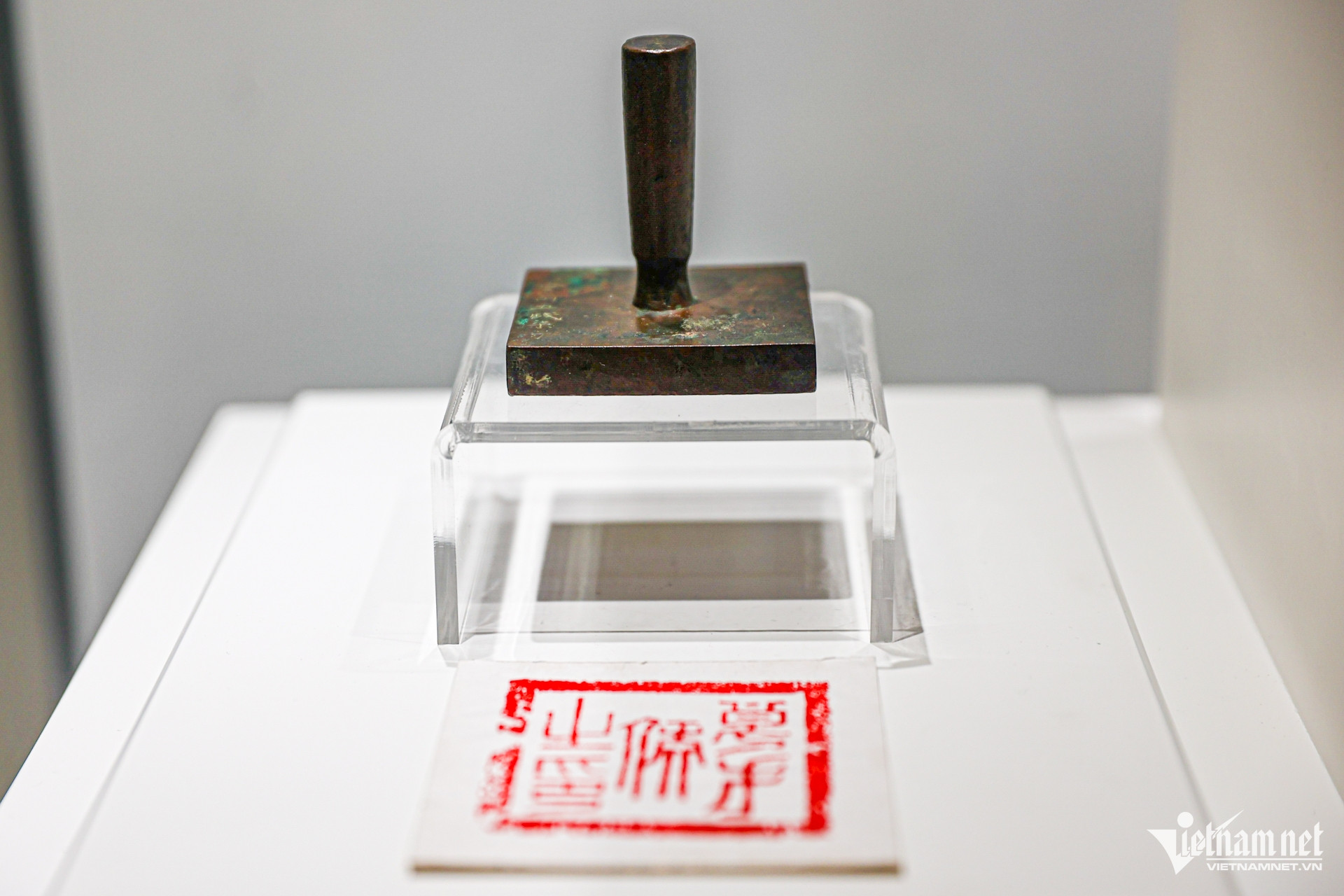
Seal of Luong Tai Hau, dated 1833. Artifact belongs to Ho Chi Minh City Museum, recognized as a national treasure in 2020.


The painting "Thanh Nien Thanh Dong" by artist Nguyen Sang was recognized as a national treasure in 2017.
On the right is the lacquer painting “Spring Garden of Central, South and North” by painter Nguyen Gia Tri, recognized as a national treasure in 2013. This is a work he created over nearly 20 years (1969-1989) with a large size of 200x540cm.
Both artifacts are kept at the Ho Chi Minh City Museum of Fine Arts and are digitized for display at this exhibition.
Vietnamnet.vn
Source: https://vietnamnet.vn/ngam-tuong-phat-co-xua-va-cac-bao-vat-quoc-gia-dang-trung-bay-tai-tphcm-2416342.html



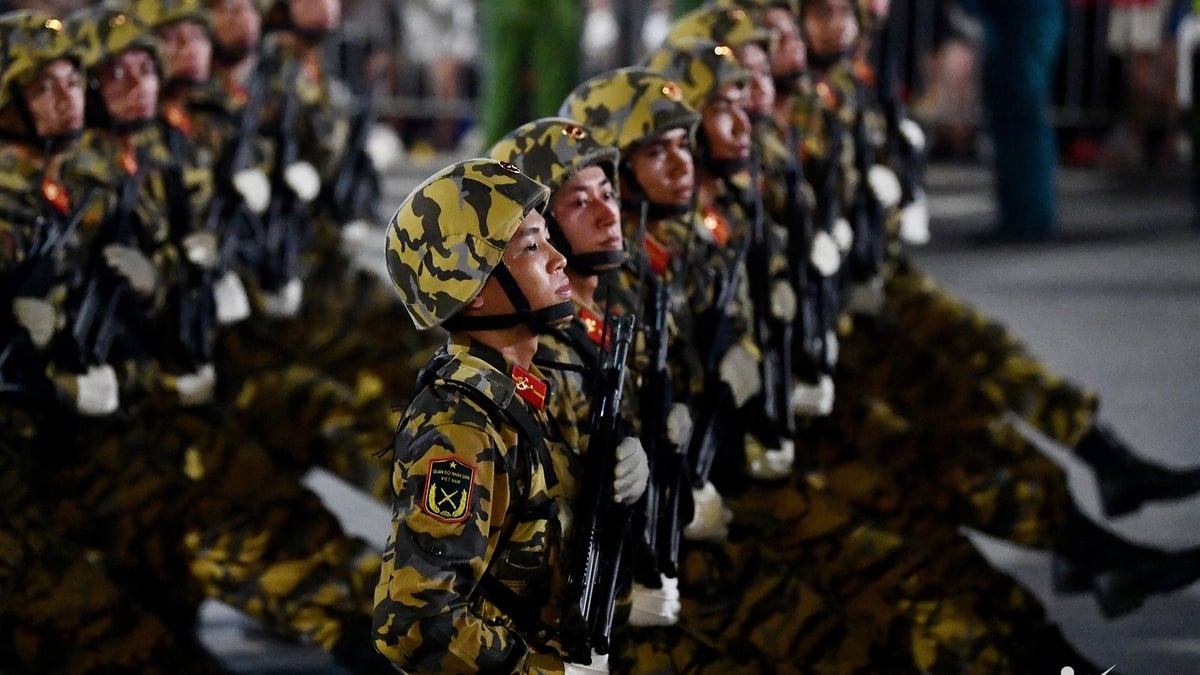
![[Photo] National Assembly Chairman Tran Thanh Man holds talks with New Zealand Parliament Chairman](https://vphoto.vietnam.vn/thumb/1200x675/vietnam/resource/IMAGE/2025/8/28/c90fcbe09a1d4a028b7623ae366b741d)



![[Photo] Images of the State-level preliminary rehearsal of the military parade at Ba Dinh Square](https://vphoto.vietnam.vn/thumb/1200x675/vietnam/resource/IMAGE/2025/8/27/807e4479c81f408ca16b916ba381b667)




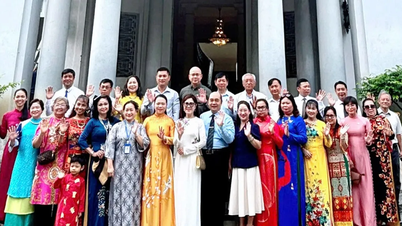


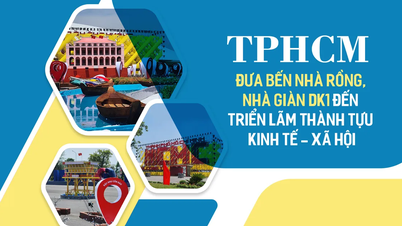
![[Photo] Parade blocks pass through Hang Khay-Trang Tien during the preliminary rehearsal](https://vphoto.vietnam.vn/thumb/402x226/vietnam/resource/IMAGE/2025/8/27/456962fff72d40269327ac1d01426969)



![[Photo] Many people eagerly await the preliminary review despite heavy rain](https://vphoto.vietnam.vn/thumb/402x226/vietnam/resource/IMAGE/2025/8/27/4dc782c65c1244b196890448bafa9b69)
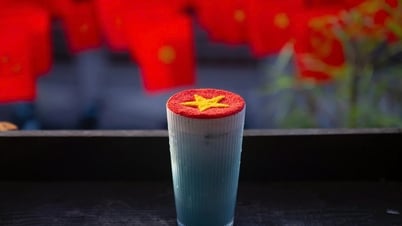







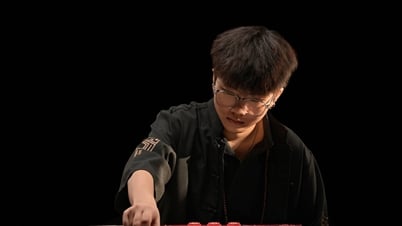






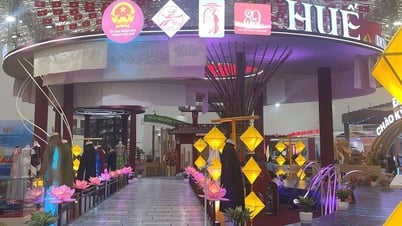

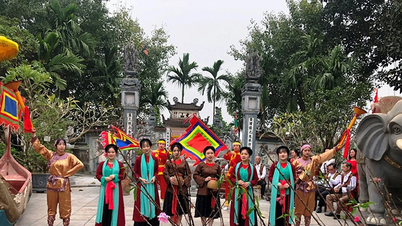
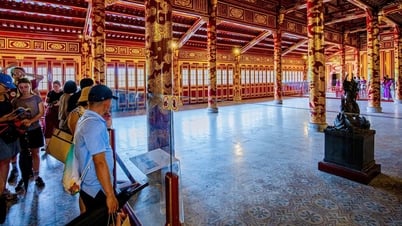
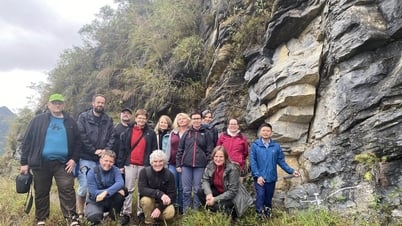

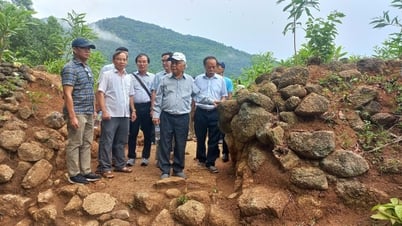
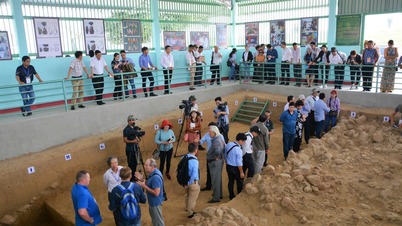

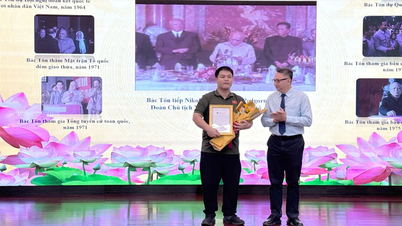
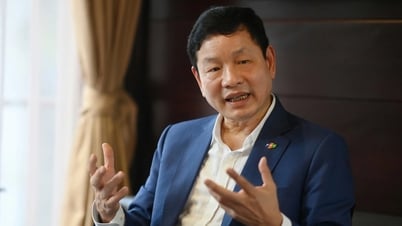






















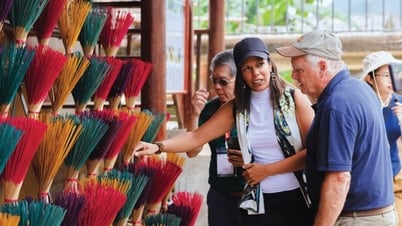


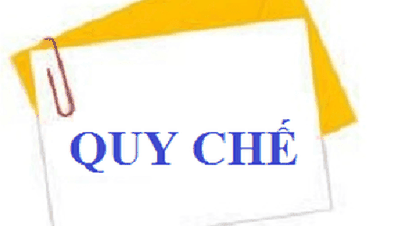
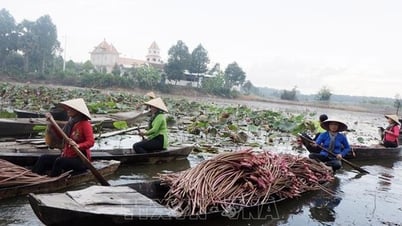

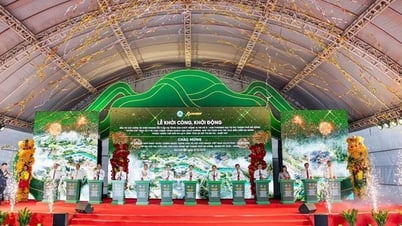
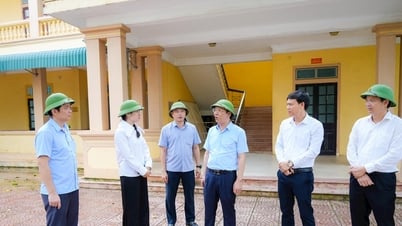






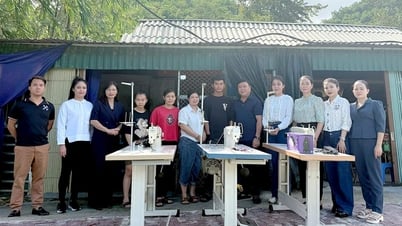












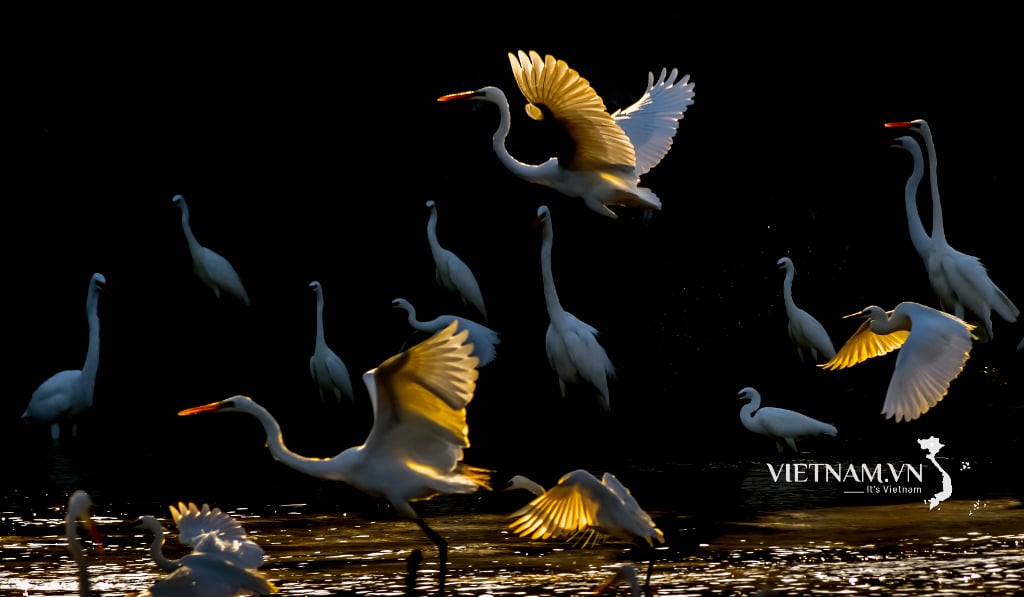
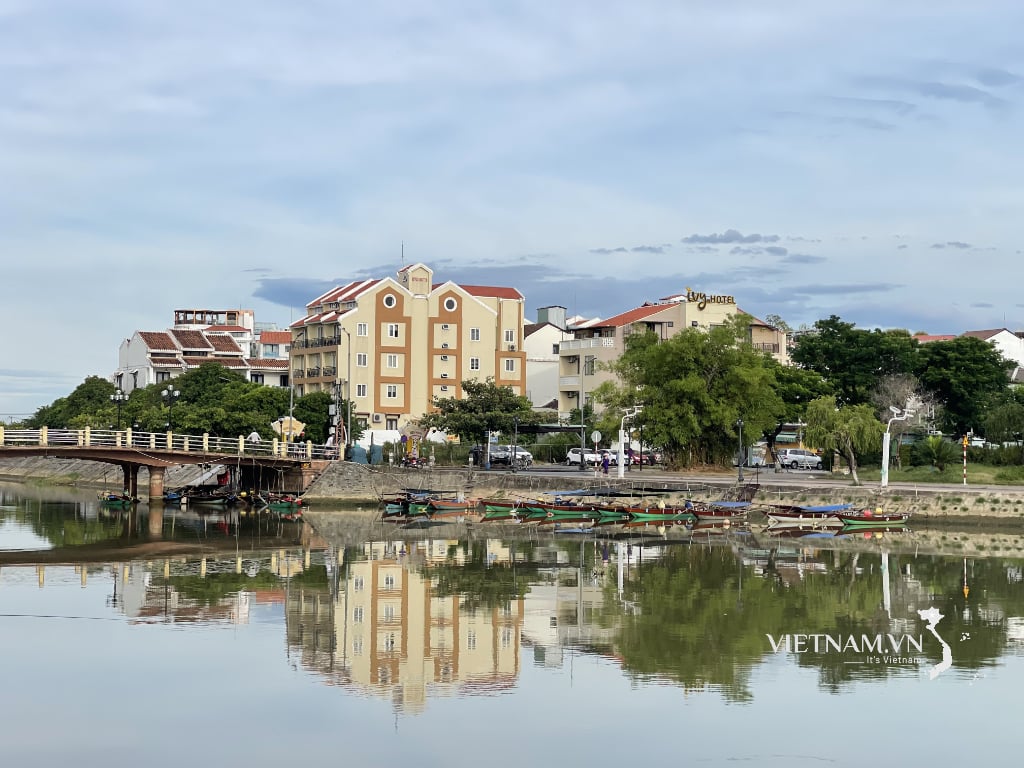
Comment (0)